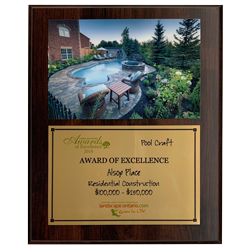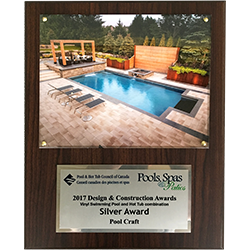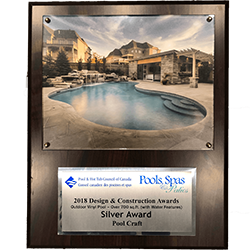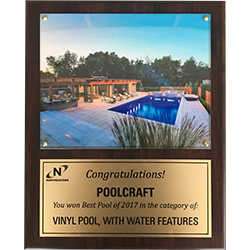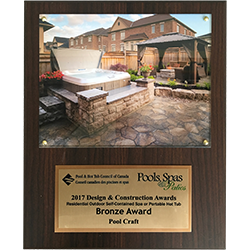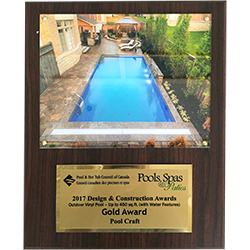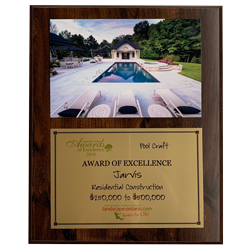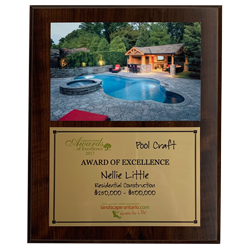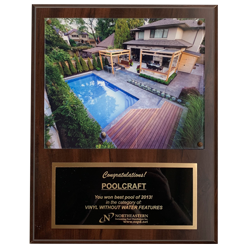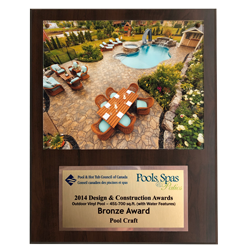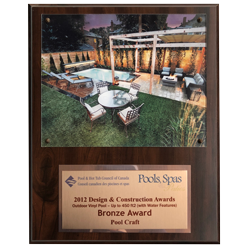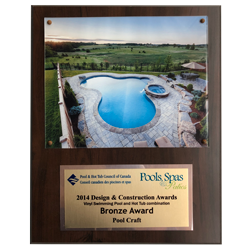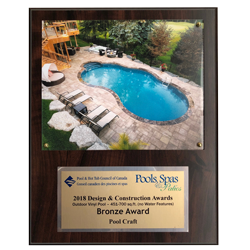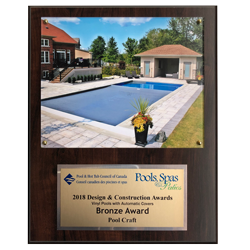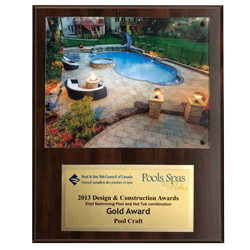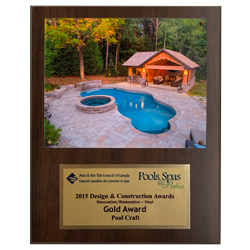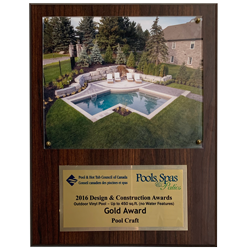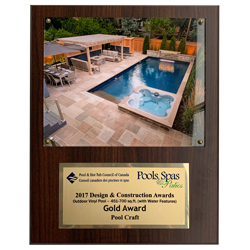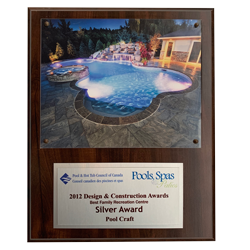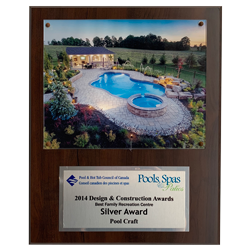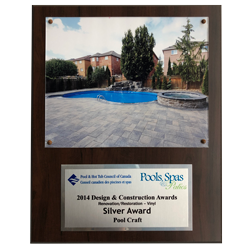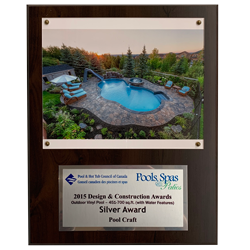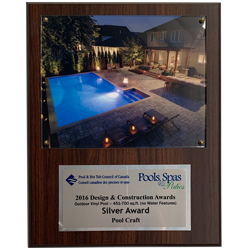Safety covers are by far the most popular upgrade homeowners are investing in for the winter season. However, not all safety covers are created equally and they aren’t for everyone.
Here are some things to consider when you’re deciding what’s best for you and your family.
1. Safety Covers Do Keep People Safe
Safety covers are indeed the safest option on the market. Designed to stay flush with the pool deck, safety covers are great for families with pets or children.
Pool water levels are lowered in the winter when your plumbing lines are drained. Every other cover on the market sits on top of the water level, meaning there is a 2ft drop from your pool surface to the cover. Rain, snow and debris collect on top of this, making another “pool”. This essentially becomes a safety concern for anything wandering around your yard.
Safety covers are secured tightly around the pool using springs and anchors – much like a trampoline. The taught surface means you can walk on it if necessary and they are capable of holding up to 4,000 lbs. However, you should note that it’s not designed to be an additional play area for your yard.
Read our blog on Pool Safety Covers 101 to learn more about pool safety.
2. There Are 2 Different Types of Safety Covers
Mesh Safety Covers & Solid Safety Covers
Both types of safety covers are flush to the pool coping, Mesh safety covers are definitely the more popular choice and what we at Pool Craft recommend. Here’s why:
Mesh pool covers typically cost 30% less than a solid vinyl pool cover and last 10–15 years. They don’t need a pump on top and only require a little work during the winter. There are different types of weaves on mesh covers (standard and mesh 99). You can read about these differences HERE.
The most important thing to understand about mesh vs solid is the transfer of water and sunlight. A mesh cover allows surface water and some small debris to seep through its weave, making for less maintenance throughout the winter, but more clean-up upon opening.
The slight transfer of sunlight also means that your chlorine will dissipate over time, and if you leave your pool closed well into the spring you may have algae blooms. While these two things don’t happen with solid covers we feel that the mesh is best because it’s more cost-effective, safe, and requires little maintenance.
Something to NOTE. NO COVER is maintenance-free. WATER LEVELS on pools with mesh covers need to be checked throughout the winter to ensure the water doesn’t rise above the coping line. Snow and ice will accumulate on the top of the cover causing it to bow under the weight. This is normal and can be removed safely during the season.
Pool Craft also offers a winter check service where we come and ensure your water levels are safe, and the cover is free from any harmful debris, the anchors haven’t been compromised and your overall pool area is safe and secure.
Read more about cover types on our blog.
3. Installing Safety Covers Is A Skill & even with a pro, damage can occur
With a professional installer, the job of installing a pool safety cover can be done within a couple of hours.
The cover will be held in place with grommets installed in the pool deck. These grommets can be tightened to be flush with the pool deck during the summer months so that it is not a tripping hazard.
It is important to make sure the type of grommet you use matches the material your deck is made out of so that they hold tightly in place without compromising the integrity of the cover.
At Pool Craft, It’s our job to know the best way to handle every project, but even with a pro, damage to the deck area and raised walls can occur.
When you drill into concrete and stone there is always the possibility for small chips or cracks. As professionals, we know stone. You can rest assured that we will do the least amount of damage (if any) and although these potential cracks are unpredictable, they are cosmetic, not structural.
Stone can usually be replaced but unfortunately, trying to patch concrete is NOT an option we suggest. It doesn’t match, no matter what anyone tells you. This is something we share with all our clients, transparency is everything and we want you to know what risks exist.
Check out our Pool Cover Installation Guide today.
4. Not all pools are created equally and a safety cover isn’t an option for everyone
As pool designs increase in complexity the surrounding perimeter can be too detailed for a safety cover.
While a 16ft waterfall or retaining wall flush with the pool is stunning, it’s not always pragmatic for a safety cover install.
A safety cover typically has a 2ft overlap surrounding the perimeter of the pool. This provides stability for the cover. When you have a wall or cut-out that is too extensive for the cover to maintain that integrity, it no longer is an option that a manufacturer will stand behind.
If your pool design is one that doesn’t meet the manufacturer’s standards for a safety cover we will recommend that perhaps you invest a little more in an ungraded safety fence.
5. Covers Need To Be Stored Properly In The Summer
This one is pretty straightforward. All covers are delicious to mice – they need to be stored/sealed during the summer months.
Safety covers are generally repairable, so if you have a fraying strap or hole that needs to be replaced we send it back to the manufacturer and they will repair it for a nominal fee.
We recommend you place your cover in the bag provided by the manufacturer and then purchase a Rubbermaid style bin for added protection. Consider one that has snap-locks on top for added security.
For all of your pool safety cover needs, get in touch with Pool Craft today.
